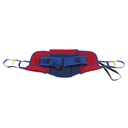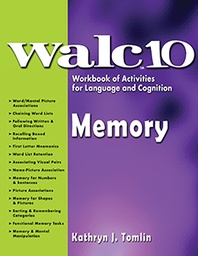WALC 9 Verbal and Visual Reasoning - Workbook of Activities for Language and Cognition
Verbal and visual reasoning are interrelated. These exercises "tease" out the integral parts and stimulate reasoning skills.
Written in the best-selling format of the Workbook of Activities for Language and Cognition series, these activities have:
- easy-to-read format
- simple, concise language
- consistent progression of complexity within and between tasks
- application to a wide range of acquired cognitive-language disorders
- processes of reasoning
The tasks are divided into verbal reasoning and visual reasoning.
Verbal Reasoning
- Emotions and Personal Situations: reason and talk about emotions, self-concept, opinions, family interactions, friendship, and conversation skills
- Idioms and Proverbs: recognize when something is literal or abstract and look for different meanings in what is heard
- Categorization: name objects by category, provide categories and subcategories, add members to categories, and recognize categorization in the context of sentences
- Convergent Reasoning: differentiate facts and opinions; solve word puzzles, deduction puzzles, and acrostics; and answer logic questions
- Analogies: fill in missing parts to complete analogies
- Paragraph Comprehension: make accurate inferences about stories
Visual Reasoning
- Visual Analogies: complete picture and figural analogies of increasing complexity
- Visual Figure-Ground: locate figures and shapes within the whole and parts within a whole
- Visual Sequencing: identify visual changes and sequence items by those changes
- Visual Closure and Reasoning: identify missing and salient features, choose figures to complete an image, make visual inferences, and identify incongruities in pictures
- Drawing: higher level tasks for vocational purposes include drawing figures to scale and sketching floor plans

Pro-Ed™
Cognitive Testing



